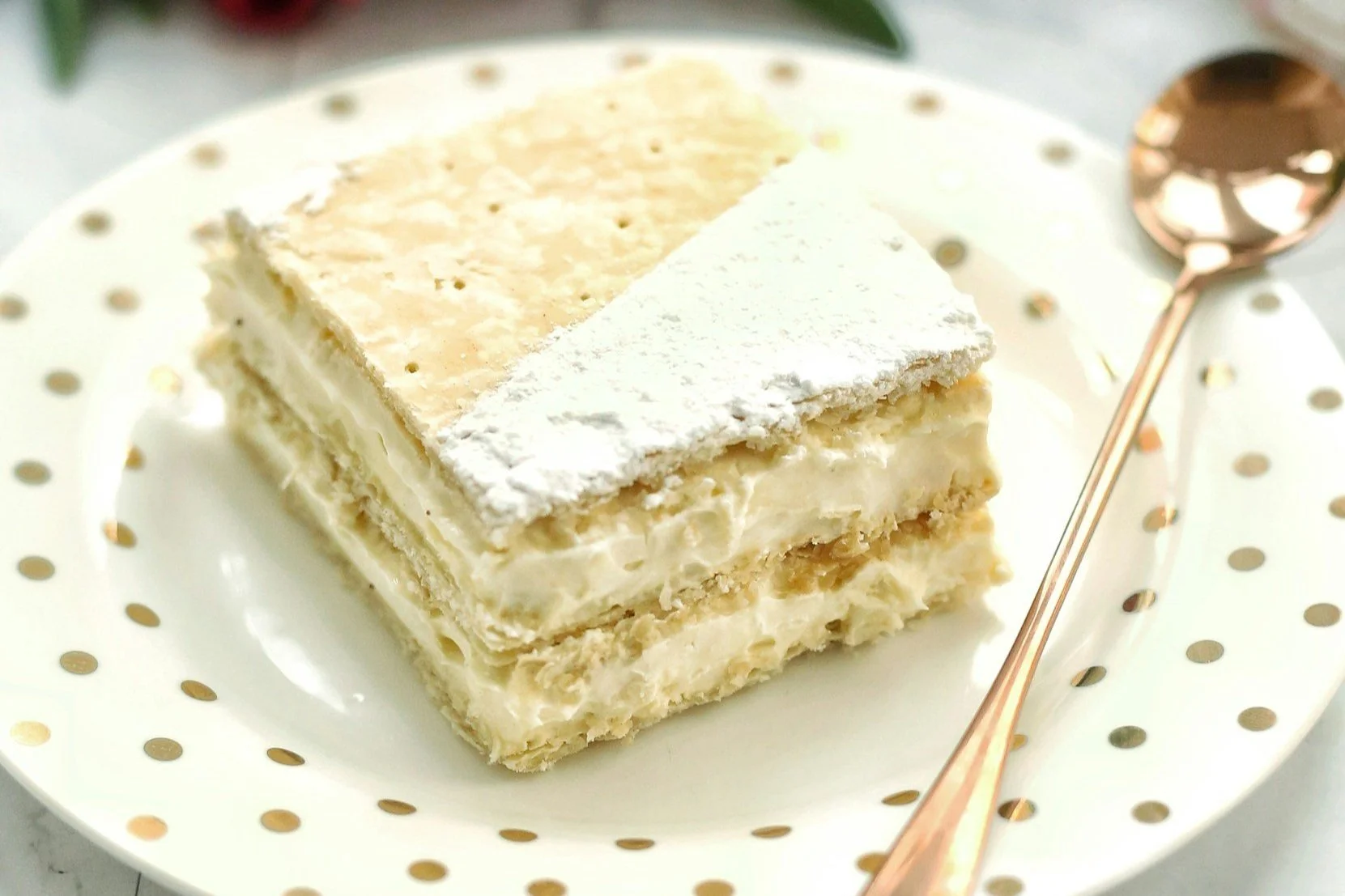Ukrainian Prairie Stories: Recipes and Roots Across the Land
When people speak of Canadian food, it’s often in generalities—maple syrup, poutine, butter tarts. But the real story of Canadian cuisine is one of interwoven legacies. Ukrainian food, especially on the Prairies, is not just a cultural layer; it is a foundational thread in how rural communities fed themselves, celebrated, and built resilience on new soil.
From Baba’s Hands to Bake Sales: Ukrainian Honey Cakes in Rural Alberta
In Ukrainian tradition, medivnyk is a dense, dark honey cake spiced with cinnamon, cloves, and sometimes coffee or cocoa. Though simple in its, ingredients the cake was rich in symbolism and carefully reserved for feast days—especially Christmas, New Year’s, and major weddings. In some regions, it was part of ritual offerings, tied to both the sweetness of life and the warmth of shared gatherings.
Dill in the Boreal: How Ukrainian Herbs Naturalized Along Prairie Fencelines
When Ukrainian immigrants began arriving in Canada in the late 19th and early 20th centuries, many brought more than just tools and textiles. Tucked into coat linings or sewn into satchels were precious seeds from the Old Country—reminders of the land they left behind and essential for the lives they hoped to build. Among the most prized were herbs: dill, caraway, lovage, parsley, and sorrel.
Holubtsi on the Homestead: Cabbage Rolls and Root Cellars in Alberta’s Ukrainian Settlements
Between the late 1890s and the 1930s, thousands of Ukrainians arrived on the Canadian Prairies, seeking land, freedom, and the possibility of a better life. Alberta, with its vast stretches of forest-prairie edge and fertile soil, became home to some of the largest Ukrainian settlements in Canada. Places like Vegreville, Lamont, Mundare, and Andrew emerged as cultural strongholds where faith, language, and food could survive in a new land.
Perogies Across the Prairie: From Hand-Stuffed Dumplings to Freezer Staples in Saskatchewan
Saskatchewan’s landscape—sweeping plains, black soil, and harsh winters—offered both challenge and familiarity to Ukrainian immigrants who began arriving in the 1890s. Many came from agricultural backgrounds in Western Ukraine, regions that shared the open skies and grain-rich horizons of the Prairie provinces. The land promised opportunity but required adaptation.
Rye and Resilience: The Ukrainian Bread Legacy in Manitoba’s Parkland Region
In the late 19th and early 20th centuries, waves of Ukrainian immigrants arrived in the Canadian Prairies, many settling in what is now known as Manitoba’s Parkland Region—especially around Dauphin, Ethelbert, and Sifton. Seeking land, freedom, and survival, these newcomers brought more than just labour and language. They brought food traditions that were deeply tied to the rhythms of the earth—and none more foundational than rye bread.
Indigenous Foodways of Edmonton: Rediscovering Traditional Flavours
Edmonton rests on Treaty 6 territory, the traditional lands of the Néhiyaw (Cree), Niitsitapi (Blackfoot), Métis, Nakoda (Stoney), Dene, Haudenosaunee (Iroquois), and Anishinaabe (Ojibway/Saulteaux) peoples. This place is not just a backdrop for food—it is a living landscape of knowledge, culture, and memory.
A Taste of Italy: Italian Cuisine in Edmonton
Italian immigrants arrived in Alberta in small numbers as early as the 1890s, often settling in mining towns like Coleman and Blairmore. By the 1920s and again after World War II, larger waves of immigration brought families from Calabria, Abruzzo, Sicily, and Veneto to Edmonton.
Edmonton’s Oldest Restaurants: A Taste of History
Edmonton is a city that wears its age quietly. While much of its modern identity has been shaped by oil booms, arts festivals, and growing immigration waves, the story of its food is told in tucked-away diners, enduring bakeries, and family-run restaurants that have outlived trends.
The Origins of Cinnamon
Cinnamon comes from the inner bark of trees in the Cinnamomum genus. The most prized variety, Cinnamomum verum (or Ceylon cinnamon), is native to Sri Lanka. Other types, particularly Cinnamomum cassia, originated in China and Southeast Asia and are often sold under the same name, especially in North America.
Beyond the Barbecue: The Real Roots of Canadian Summer Foods
Every Canada Day, backyards across the country fill with the familiar scents of grilled meat, corn on the cob, and something sweet with strawberries or maple. The scene is familiar, but often misunderstood. What we now think of as “classic Canadian summer food” is not a product of modern convenience—it’s the result of generations of knowledge, trade, migration, and resilience.
The History and Heritage of Focaccia
When you think of Italian bread, your mind might jump to crusty ciabatta, a fluffy ciabattina, or maybe even pizza. But there’s one humble flatbread that has a story as rich and layered as its texture — focaccia.
Northern Flavours
Smoke curls lazily from the stovepipe of a log cabin tucked into the spruce-lined banks of the Nagwichoonjik (Mackenzie River). Inside, the air is thick with the scent of juniper and freshly caught arctic char simmering over the fire. A cast-iron pan crackles as bannock browns to a golden crisp, its dough flecked with wild herbs gathered from the forest floor. It’s not just a meal—it’s memory, survival, and ceremony passed down through generations.
The Evolution of Greenlandic Gastronomy
Greenland’s culinary landscape is undergoing a quiet but profound transformation. Rooted in Inuit food traditions that have sustained communities for centuries, Greenlandic cuisine is now being reimagined through modern culinary techniques and global influences. This evolution is driven by a growing interest in sustainability, cultural identity, and the need to adapt to a changing environment. As the world looks northward for new culinary experiences, Greenland is embracing innovation while fiercely preserving the essence of its traditional food culture.
Seaweed in Greenlandic Cuisine
In Greenland’s harsh Arctic environment, where traditional agriculture is nearly impossible, the ocean has always been the primary source of nourishment. Fish, seal, whale, and other marine resources have long sustained Greenlandic communities, but one ingredient remains underappreciated despite its abundance and immense nutritional value: seaweed.
How to Create the Perfect Winter Brunch Menu
Winter is the season for cozy gatherings, and there’s no better way to celebrate a chilly weekend morning or a holiday gathering than with a delicious, comforting brunch. The perfect winter brunch menu combines the warmth and indulgence of seasonal flavors with the coziness of good company.
Holiday Meal Prep Made Easy
The holiday season is a time of joy, but it can also be a whirlwind of cooking, cleaning, and entertaining. From hosting large family gatherings to preparing meals for intimate celebrations, the amount of cooking involved can feel overwhelming.
Seasonal Holiday Baking
The festive season is synonymous with indulgent sweets, and for many cultures, holiday desserts are an essential part of the celebrations. Whether it’s a spiced cake, a rich pie, or a sweet confection, each country has developed its own unique holiday traditions surrounding dessert. While classic cookies, cakes, and pies are often the stars of the season, lesser-known global desserts offer fresh flavours and culinary stories that reflect diverse cultural practices and history.
Winter Comfort Foods to Warm Your Soul
In my corner of the world, the snow is settling in. Tis the season for scraping ice off cars, shovelling sidewalks, and making hot, nourishing food.





















